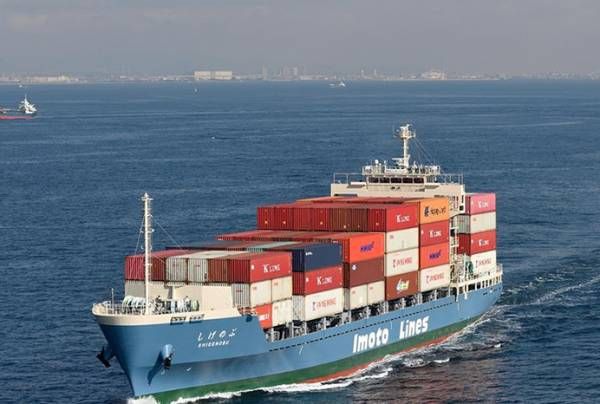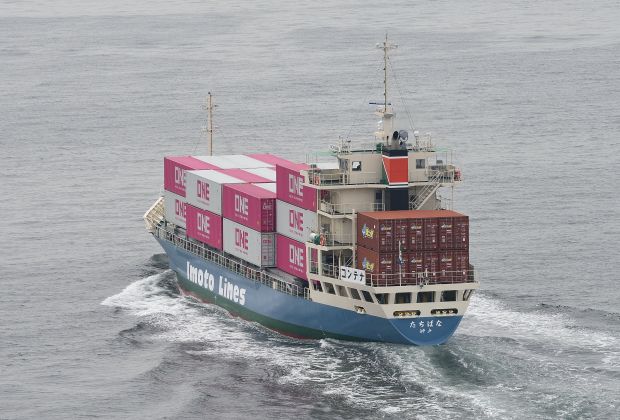
A Japanese consortium made up of coastal shipping company Imoto Lines and marine software company Marindows is launching a government-backed effort to develop a next-generation containership. Plans call not only for the vessel to address decarbonization with the ability to operate emissions-free, but also to address the emerging challenges due to the lack of seafarers in Japan. The companies have scheduled the completion of the vessel for January 2027.
Imoto, which is a leading operator of coastal feeder ships, reports the designs for the new vessel feature a hybrid operational capability centered on batteries. The vessel will be able to use containerized batteries that can be swapped out to extend its efficiency. They expect to power the vessel with three 20-foot battery containers with an assumed 2000kWh power capacity. It will employ a standardized and modularized universal plug-in hybrid powertrain.
The vessel will also be equipped to use shore power while on dock both to power its operations and to recharge. Using two 360kW engines, the vessel is expected to have a speed of 12.5 knots. Its maximum range in hybrid operations will be 2,700 miles while using just the three containerized batters it will have a range of 180 miles. It will also be designed for the future installation of low-environment impact technologies such as hydrogen fuel or the use of bio or synthetic fuel.
Plans call for the containership to have a capacity of 200 TEU. It is projected to be 499 gross tons with an overall length of 265 feet (81 meters) and a beam of 44 feet (13.5 meters). Miura Shipbuilding in Saiki City will build the vessel.
The ship will be deployed on the route between Kobe and Hiroshima. It will also operate as a demonstration project supported by the Ministry of Environment’s Carbon Neutral Technology Research and Development Program.
In addition to addressing the challenges of zero-emission operations, Imoto points to the challenges of a shortage of seafarers and skilled mariners to operate vessels. The government has highlighted in the past the anticipated challenges as the Japanese population ages.
Working with Marindows they plan to develop standardized operations that will be supported by a shore operations center meaning the vessel will require fewer people and less skills and experience to operate. They report systems will be modularized and standardized for ease of operation.
One of the five goals of the project is to improve the work environment for crewmembers while also enhancing productivity per crewmember. They believe it will be possible to create a vessel that will have the same expenses as existing ships and can be environmentally friendly while costing basically the same as existing ships.
They believe mass production will maximize the financial efficiency of the vessel for operators. Modularization will also permit them to protect from obsolesce by creating the ability to replace individual systems as new technologies are commercialized.



We use cookies to improve your experience. By continuing to use our site, you accept our Cookies, Privacy Policy,Terms and Conditions. Close X